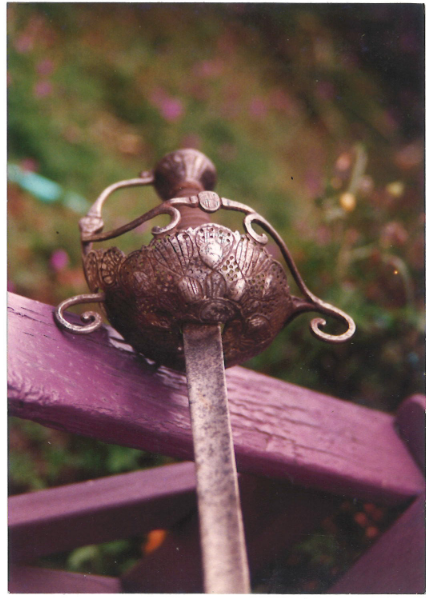Posts: 910 Location: Austria
Tue 03 Nov, 2020 10:49 am
Two vloggers have recently measured the
distal taper of swords and sabres in their collection:
Nathan Clough, "How Thin were Medieval Swords?" Arms & Armor Inc. channel, 28 September 2020
https://www.youtube.com/watch?v=yIIypm61WE4&feature=emb_title
Matt Easton, "Sword DISTAL TAPER: What you NEED TO KNOW with STATS of Antiques & Good Replicas." scholagladiatoria channel, 1 November 2020
https://www.youtube.com/watch?v=9CV2O0jkHK8
The measurements are buried in the videos not in a handy table, and they chose places to measure by eye rather than carefully measuring from a point of reference, but its still information on a subject which is hard for people other than collectors and museum staff to access.
One thing which I notice is that some 18th and 19th century broad single-edged swords and sabres for the European market have extreme distal taper (ending up 20-30% as thick near the point as at the cross) while earlier European broad flat blades (and 18th and 19th century European blades for the overseas market) often have more moderate distal taper, losing about half their thickness from cross to point.
Peter Johnsson commented on the second video:
| Quote: |
Thank you for this video Matt!
The topic of distal taper is central to the understanding of sword blades.
I think you provided a good outline and presented many valid points.
From a sword maker´s point of view I think it is useful to approach the principles of distal taper, rather than the dimensions.
When we look at wider, thinner blades, their taper will in absolute dimension/metrics of course be less than the taper found thicker blades. If you compare the proportion of distal taper from base to point, it can be very similar, however. The Lancaster and the Clontarf are not all that different if you compare the proportion, or percentage of the distal taper (there is a difference, but it is one of degrees rather than of principle).
Another really important point that you touch on, but I think can be stressed even mor is the relationship between the silhouette or outline form of a blade and its distal taper (more profile taper, moreand youneedand also have more mass per length unit and still remain responsive (in many cases a shorter blade must be made with more mass per length than a longer blade if it is to fulfil its potential).
-I think it is necessary to look at distal taper in context with other factors of blade design to really make sense. It is also important to study distal taper with care and precision, or the subtlety that is really the crucial element in this, will go unnoticed and reamin unknown.
It is true what you say that not all swords have distal taper, but the ones that do not form a very, very small minority.
It is also true that many swords seems not to have much of a distal taper (if they are fairly thin and wide, for example) but the distal taper they do have is still of absolutely crucial importance. Describing swords that at first glance seem to have little or not distal taper as "having no distal taper" is making a fundamental mistake.
-I am not accusing you of this, even though you say it in passing a few times as you were making a point of argument. I only felt motivated to stress this point.
Describing a blade as "not having much of a distal taper" since the distal taper is subtle and discreet, invites a bluntness of thinking. The conclusion that "this type of blade should not really have any distal taper" is close at hand. I meet customers and practitioners who take pride in their knowledge of historical swords saying this to me with pride of knowledge.
Another common misunderstanding is that distal taper makes a sword floppy and wobbly, while it is in fact the lack of a dynamic profile of distal taper that makes blades wobble.
I think it is useful to realise that sword blades almost always (98% ?) have distal taper and then look closely to see how it is expressed: is it really subtle? Is it dramatic and very obvious? is it even or highly varied? Is it linear (really very unusual in historical blades, if you care to take precise measurements) or does it vary over the length of the blade (this is the case in nearly all blades): and finally HOW does it vary, not only in absolute measurements, but in proportion in thickness to the base of the blade and over the length of the blade.
I think the importance of how the distal taper is applied over the length of the sword cannot be overstated. The "curve" and variation in gradual reduction of thickness of the blade is paramount to handling and performance. The difference between a blade that is wobbly and feels dead in the hand to one that is lively and stiff can be a matter of only a millimeter or often a few tenths of a millimeters in parts of the blade.
Again, thank you for your tireless work :-) |

